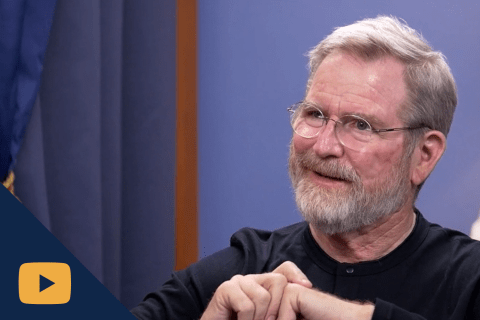
“So when the woman saw that the tree was good for food, and that it was a delight to the eyes, and that the tree was to be desired to make one wise, she took of its fruit and ate; and she also gave some to her husband, and he ate. Then the eyes of both were opened, and they knew that they were naked; and they sewed fig leaves together and made themselves aprons. And they heard the sound of the LORD God walking in the garden in the cool of the day, and the man and his wife hid themselves from the presence of the LORD God among the trees of the garden” (Genesis 3:6-8).
When we pray with the account of the Fall – the moment when Adam and Eve chose against God – we see that the first consequence described is not primarily moral. Adam and Eve do not become wicked, manipulative, slimy creatures like the serpent, nor do they become hateful of God – at least, not immediately. Instead, what we see as the most immediate consequence of the first sin is less a moral difference than it is a relational difference: Adam and Eve hide from one another through the hiding of their nakedness, and then they hide from God. The fundamental movement of their hearts is away from God, unwilling to be vulnerable to him or before him in precisely the part of their hearts in which they need him most: “the man and his wife hid themselves from the presence of the LORD God.”
Evil has been described as incurvatus in se – a turning inwards on oneself. The goal and consequence of evil is that we be kept at a distance from God; in fact, it is that we keep ourselves at a distance from God. Through a combination of deceit, hiding, and a lack of vulnerability, we cease to relate to God and thus are kept from receiving from him. In our sadness, hurt, and shame, we turn away from relationship with God, the source of all goodness, and fall further away. Thus, the God to whom Adam and Eve had once opened their hearts now witness Adam and Eve close and hide their hearts. The fundamental consequence of sin is a non-relational existence in which we now live alone in our own hearts, especially where we have chosen against God.
After Genesis has described the relational consequence of the Fall, we see the moral consequence: Adam immediately throws the blame on Eve: “The woman whom you put here with me—she gave me fruit from the tree, so I ate it” (Genesis 3:12). In this case, the moral breakdown follows the relational breakdown. The human person sins, grows distant from God and thus stops receiving from him, and consequently falls further into moral brokenness.
I propose that Mary’s immaculate conception and perpetual virginity serve as the antithesis of the non-relational existence of humanity due to the Fall. In order to understand this, we need to look back at her interaction with the Archangel Gabriel in the Annunciation:
The tradition that states that Mary had committed herself to virginity even before the Annunciation helps us to understand the role of both the Immaculate Conception and her perpetual virginity in God's plan of salvation for the human race. In response to the sin and thus non-relational existence of Adam and Eve, God chose for Mary to be conceived immaculately such that she was freed from the inward-turning of sin, and thus remained capable of relationality with God to an extent not attainable by fallen humanity. From this purified relational stance before God, Mary chose to commit herself to him entirely through virginity. Thus, Mary’s commitment to virginity arose from a desire to stand entirely before God, naked and unencumbered, able to give herself entirely to God and receive everything from him. Her commitment to virginity, in that sense, is the anti-Adam-and-Eve experience: rather than grasping for equality with God, she gave everything back to him.
The primary lens through which to view Mary’s perpetual virginity, then, is relational rather than moral, a remedy to the inward-turning of Adam and Eve; thus, we are given a path for our own lives. Her ever-virginity is about this fully relating to God all of her needs. This, again, provides a profound contrast to Adam and Eve’s response to original sin invading their souls. The consequence of sin includes a non-relational energy within us, especially around sadness, hurt, and shame.
Do we want to overcome our struggles with immorality? To do so, we must increase our relationality with God on a deeper and deeper level, acting against our tendency to turn further inwards after sin.


